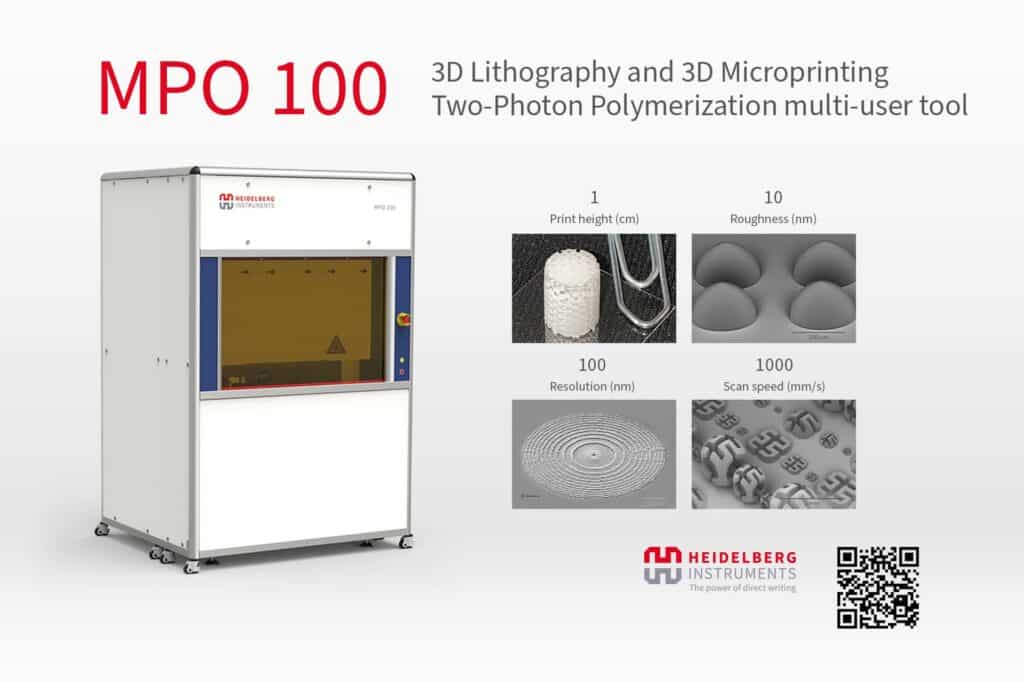Multiphoton Optics launched new 3D printer MPO 100 for micro and Nano printing, the new printer is capable of printing products that were previously challenging.
More from the Company
Achievable component heights of over 1 cm, surfaces with roughness in the order of 10 nm, structure sizes of less than 100 nm, and writing speeds over 1000 mm/s: At the SPIE Photonics West in San Francisco, from January 25th to 27th, Heidelberg Instruments will be presenting, for the first time, the new two-photon polymerization MPO 100, a multi-user tool that combines both the requirements of 3D lithography with resolutions in the 100 nm range and 3D microprinting with structure heights of over one centimeter, all in one device.
“The MPO 100 is a unique tool for microfabrication and achieves the highest resolution among additive manufacturing processes at 100 nanometers. Furthermore, the 1-10-100-1000 capability of the MPO 100 will enable users at universities, R&D institutions, as well as the industry and offer significant advantages for new developments in areas such as micro-optics, microfluidics, and biomedicine,” says Dr. Benedikt Stender of Multiphoton Optics GmbH, the subsidiary of Heidelberg Instruments where the development of the MPO 100 was carried out.
The MPO 100 works with a laser wavelength in the green spectral range, which is ideally suited for the 3D structuring of typical photoresists. Furthermore, the printer is optimized to use the hybrid polymers (ORMOCER®s), particularly important for various applications. In addition to sophisticated algorithms to maximize structure quality, the synchronized scanning system offers the possibility of stitching-free patterning. In addition, the printer is currently the only tool in the market equipped with a flowbox that guarantees temperature stability of up to 0.1°C and thus provides the necessary stability for largescale exposures. Application-specific writing modes enable customer-specific printing requirements and distinguish the MPO 100 as a multi-user tool.
“With the MPO 100, we have combined the strengths of both companies in one system: Multiphoton Optics’ sophisticated exposure unit for two-photon polymerization and Heidelberg Instruments’ industrial platform, which guarantees the required stability and meets the necessary industry standards. The capabilities of the printer are already very popular with our customers, who benefit from the worldwide support from our service organization and ISO-certified production,” says Steffen Diez, COO of Heidelberg Instruments.
Subscribe to AM Chronicle Newsletter to stay connected: https://bit.ly/3fBZ1mP
Follow us on LinkedIn: https://bit.ly/3IjhrFq
Visit for more interesting content on additive manufacturing: https://amchronicle.com/



